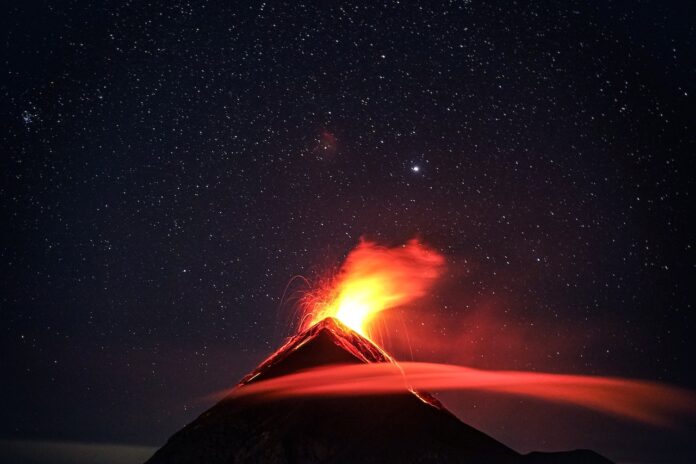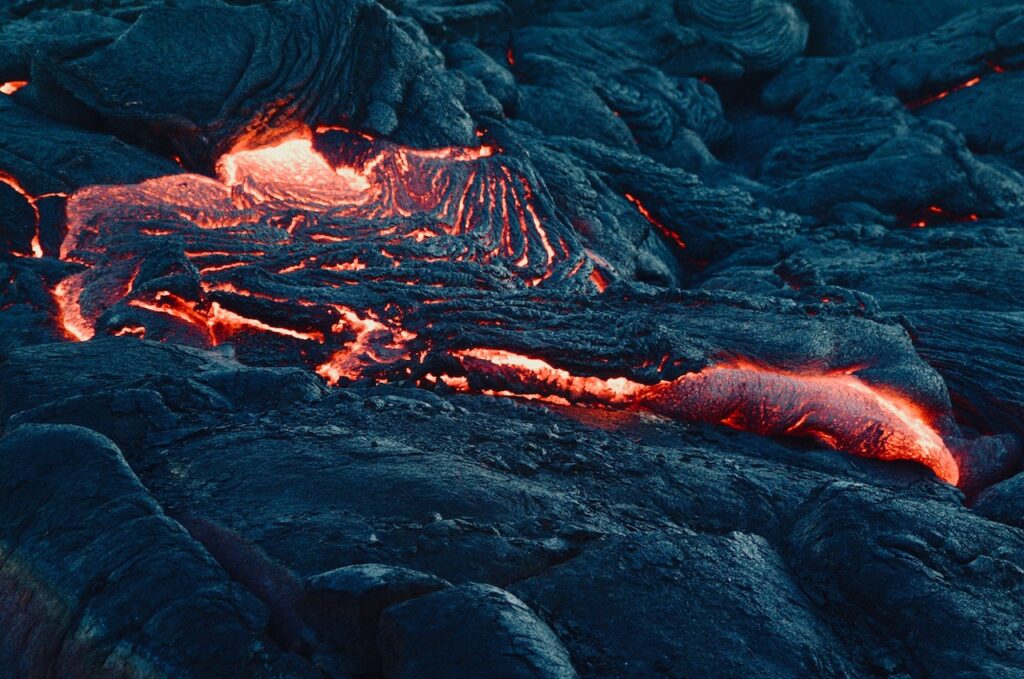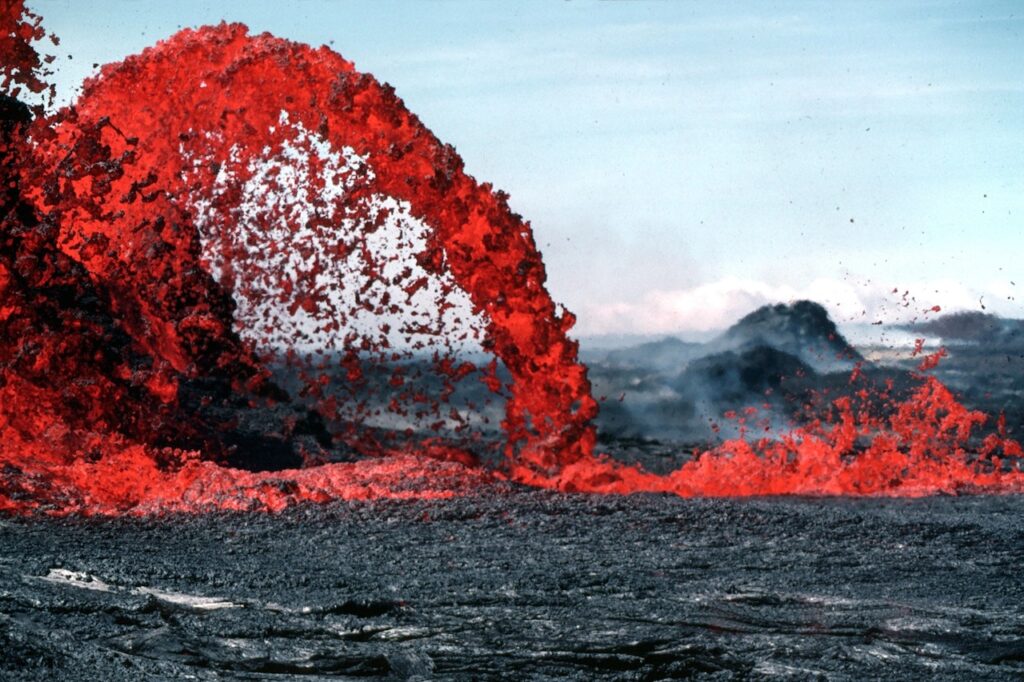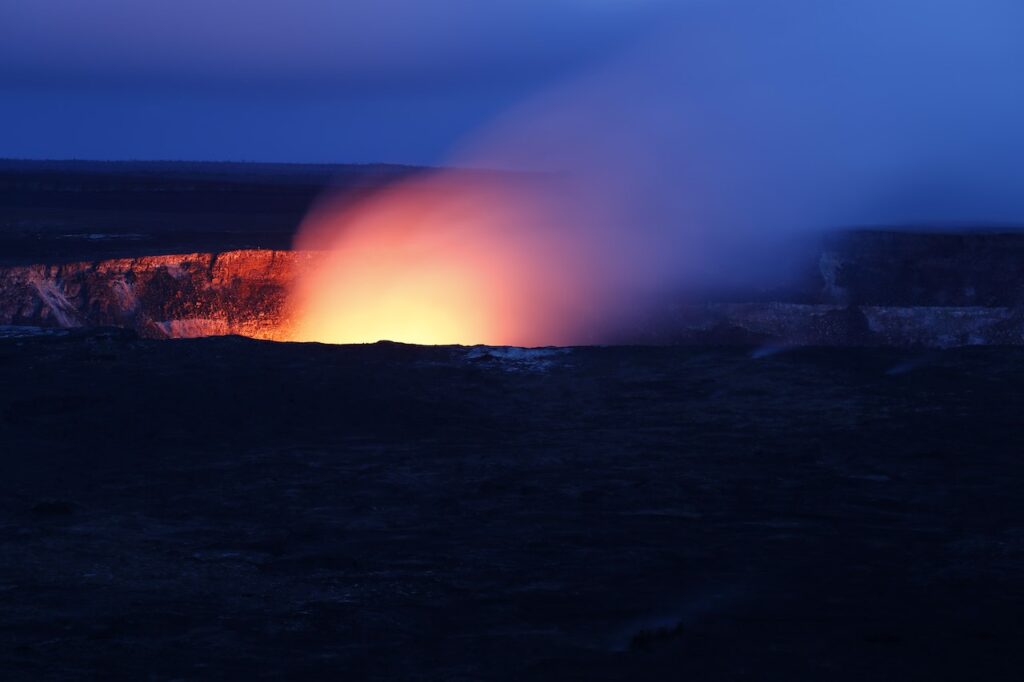
Yellowstone National Park, located primarily in Wyoming, is a breathtaking natural wonder known for its geysers, hot springs, and vibrant wildlife. But beneath its surface lies a potentially catastrophic threat – the Yellowstone Supervolcano (or Yellowstone Caldera).
While it hasn’t erupted in over 640,000 years, the possibility of it doing so in any time in the future raises alarming questions. In this article, we’ll explore the devastating consequences of potential Yellowstone Supervolcano eruption, examining both the immediate and long-term effects of such a cataclysmic event.
Understanding the Yellowstone Supervolcano
Before we delve into the catastrophic scenarios, let’s first understand what exactly the Yellowstone Supervolcano is.
The Yellowstone Supervolcano, or the Yellowstone Caldera, is an enormous volcanic system lying beneath Yellowstone National Park. It’s not your typical volcano; it’s a Supervolcano, which means it has the potential to unleash an eruption thousands of times more powerful than a regular volcanic eruption. Or to be more precise, it means that it has had an eruption with a Volcanic Explosivity Index (VEI) of 8. This implies that the deposit volume for such an eruption exceeds 1,000 cubic kilometers (or 240 cubic miles).
Now that’s huge. And scary.
How big is the magma chamber under Yellowstone?
The magma chamber beneath Yellowstone has two components. The first, located at a shallower depth, is primarily composed of rhyolite, a high-silica rock type. It spans from approximately 5 kilometers to about 17 kilometers (3 to 10 miles) beneath the surface, with dimensions of roughly 90 kilometers (55 miles) in length and about 40 kilometers (25 miles) in width. This chamber is predominantly solid, containing approximately 5-15% molten material.
The second, deeper reservoir consists of basalt, a low-silica rock type, and extends from depths of 20 to 50 kilometers (12 to 30 miles) beneath the Earth’s surface. Despite being approximately 4.5 times larger than the shallow chamber, the deeper reservoir contains only around 2% molten material.
How could Yellowstone eruption happen?

In the event of a Yellowstone Supervolcano eruption, the sequence of events would unfold as follows:
- It would all start with the gradual heating emanating from deep within the Earth’s core, causing the molten rock just beneath the Earth’s surface to melt.
- Process would then lead to the formation of a complex blend comprising magma, rocks, vapors, carbon dioxide, and assorted gases.
- Over millennia, this amalgamation would accumulate and ascend, exerting immense pressure that’d gradually uplift the terrain into a dome-like shape while generating fractures along its periphery.
- This pressure would be gradually released through these fractures.
- The dissolved gases would undergo explosive liberation, resulting in a rapid discharge of magma that blankets the park.
Is Yellowstone eruption a real threat nowadays?

Scientists continually monitor Yellowstone for signs of volcanic activity. While currently in 2023 there is no imminent threat of an eruption, the Supervolcano is far from dormant. It has experienced multiple smaller eruptions and thousands of smaller earthquakes over the years, indicating that it’s very much alive.
But what does “alive” actually mean? In more details it means the following:
- Ongoing Geothermal Activity: Yellowstone’s status as “alive” is primarily due to the continuous geothermal activity in the area. This includes the regular eruptions of geysers like Old Faithful, the presence of hot springs, and the release of gases from the Earth’s crust. These manifestations are a result of the heat and fluids rising from the underlying magma chamber.
- Heat Source: The Yellowstone Supervolcano is characterized by a relatively shallow magma chamber that contains molten rock (magma) beneath the Earth’s surface. The heat from this magma chamber is responsible for maintaining the high-temperature conditions that create the geothermal features in the park.
- Geological Changes: Yellowstone is not static; it experiences geological changes over time. The floor of the Yellowstone caldera, for example, has risen and fallen in the past, indicating that magma is still moving beneath the surface. Such geological changes are evidence of an active system.
- Potential for Future Activity: While the chances of a catastrophic super-eruption at Yellowstone in the near future are considered low, the fact that it has erupted in the past, coupled with its ongoing geological activity, suggests that there is potential for future volcanic events. Scientists monitor Yellowstone closely to detect any signs of increased volcanic activity or potential hazards.
In summary, when we say that Yellowstone is “alive,” we are acknowledging that it is a dynamic geological system with ongoing geothermal activity, a heat source from a magma chamber, and the potential for future volcanic events, even though such events are rare on human timescales.
This term helps convey the idea that the Supervolcano is not dormant (completely inactive) and that it continues to influence the landscape and environment of the Yellowstone region.
The Immediate Impact

If Yellowstone were to erupt, the immediate consequences with its blast zone would be catastrophic. Here’s what would happen:
- Explosive Eruption: A massive explosion would occur, ejecting millions of tons of ash, rock, and gas into the atmosphere.
- Ashfall: Ashfall would blanket the surrounding region, making it difficult to breathe and causing severe health problems. This ash could spread across the United States, affecting large portions of the country.
- Debris Flow: Superheated pyroclastic flows would rush down the mountainsides, incinerating everything in their path.
- Earthquakes: The eruption would trigger massive earthquakes, causing further destruction.
Estimating the Human Toll

One of the most sobering aspects of a Yellowstone eruption is the potential loss of human life. While it’s difficult to provide precise numbers due to the multitude of variables involved, experts have attempted to estimate the potential human toll:
- Immediate Impact: In the immediate blast zone, which would encompass Yellowstone and its immediate surroundings, the death toll would be devastating. Tens of thousands, if not hundreds of thousands, of people could perish due to the explosive eruption, pyroclastic flows, earthquakes, and ashfall.
- Secondary Impact: Beyond the immediate blast zone, the impact would vary based on factors like wind direction and the density of population. Ashfall and volcanic winter could lead to further casualties, particularly among vulnerable populations.
- Global Impact: The volcanic winter resulting from a Yellowstone eruption could have far-reaching consequences. Crop failures, food shortages, and civil unrest in various parts of the world could lead to additional casualties over an extended period.
- Long-Term Effects: The disruption of ecosystems and food chains could cause long-term harm, affecting human populations indirectly through reduced food availability and biodiversity loss.
It’s important to note that these estimates are speculative, and the actual human toll would depend on various factors, including the timing of the eruption, preparedness measures, and international cooperation in response to the disaster.
Climate Impact
The consequences of a Yellowstone eruption would extend far beyond the immediate blast zone. The global climate would be severely affected:
- Volcanic Winter: as already mentioned, the massive amounts of ash and gases released into the atmosphere would block sunlight, leading to a volcanic winter. The eruption of a supervolcano in Yellowstone has the potential to release sufficient particles, leading to a significant global cooling effect spanning several degrees and lasting for multiple years. This would affect agriculture and ecosystems worldwide.
- Crop Failures: Reduced sunlight and cooler temperatures could lead to crop failures, potentially causing food shortages and famine.
- Ecosystem Collapse: Many ecosystems would be disrupted or destroyed, leading to the extinction of various plant and animal species.
The Aftermath
Even after the initial eruption, Yellowstone’s impact would be felt for years, if not decades:
- Ash Cleanup: The cleanup process would be a massive undertaking, requiring significant resources and time.
- Recovery of Ecosystems: It could take centuries for ecosystems to recover, if they ever do.
- Global Climate Change: The long-lasting effects on the climate could persist for years, affecting weather patterns and agriculture.
Ongoing Research and Monitoring of the Volcano

Scientists continue to study Yellowstone’s volcanic activity to better understand the risks and potential warning signs of an eruption.
One of the most important things is framework established around monitoring activities of volcano.
But what does that actually mean? What is being used for monitoring?
Let’s see in details:
- Seismic Monitoring: Seismometers are strategically placed around Yellowstone to detect even the slightest ground movements. These devices can pick up tremors, earthquakes, and other seismic activities associated with volcanic activity. Seismic data is continuously analyzed to assess any unusual patterns or trends.
- GPS Network: A network of GPS stations has been established in and around Yellowstone. This network measures ground deformation, helping scientists track the inflation or deflation of the Supervolcano’s magma chamber, which can be an early indicator of volcanic activity.
- Geothermal and Gas Monitoring: Yellowstone’s geothermal features, like hot springs and geysers, release gases such as carbon dioxide and sulfur dioxide. Monitoring these gas emissions helps scientists understand the movement of magma and potential changes in the Supervolcano’s activity.
- InSAR (Interferometric Synthetic Aperture Radar): This satellite-based technology is used to create detailed maps of ground deformation. InSAR can detect even subtle changes in the Earth’s surface, providing valuable data on the expansion or contraction of the Supervolcano’s magma chamber.
- Remote Sensing: Advanced remote sensing techniques, including thermal imaging and infrared cameras, are used to detect changes in surface temperatures. These changes may indicate variations in hydrothermal activity or the movement of magma beneath the surface.
- Chemical Analysis: Scientists regularly collect and analyze water and gas samples from Yellowstone’s geothermal features. Changes in the composition of these samples can provide insights into the volcanic system’s behavior.
- Data Integration and Modeling: Advanced computer models and simulations help scientists interpret the data collected from various monitoring techniques. These models can predict potential scenarios and provide valuable information for risk assessment and disaster preparedness.
- Real-time Monitoring and Early Warning Systems: To ensure rapid response in the event of unusual activity, real-time monitoring systems are in place. These systems can trigger alarms and notifications to alert relevant authorities and the public.
- Public Engagement: Citizen science initiatives and public reporting play a crucial role in monitoring Yellowstone. Visitors and local residents are encouraged to report any unusual geothermal activity or geological changes they observe, contributing to the overall monitoring efforts.
Conclusion

In summary, if the Yellowstone supervolcano were to erupt, it would release an immense amount of volcanic ash, lava, and gases into the atmosphere. The immediate impact would be devastating, causing widespread destruction and loss of life in the surrounding region. The ejected ash could also have global consequences, potentially leading to a “volcanic winter” with reduced sunlight and altered climate patterns, impacting ecosystems and agriculture worldwide.
And while the odds of a Yellowstone eruption in our lifetime are very low, the potential consequences are so devastating that we must take the threat seriously. Being informed and prepared can make all the difference in the event of a supervolcanic eruption. In the meantime, we must rely on science and ongoing research to keep us safe from this natural monster lurking beneath the Earth’s surface.
Note: If you enjoyed this article you might also enjoy following articles on topic of “What would happen if”:
- What would happen if Moon disappeared?
- What Would Happen If The Moon Exploded?
- What Would Happen If Jupiter Disappeared?
- What Would Happen If You Fell Into A Black Hole?
- What Would Happen If The Moon Exploded
- What Would Happen If The Earth Stopped Spinning?
- What If Everyone On Earth Jumped At The Same Time?
- What would happen if we stopped fishing?
- What would happen if water disappeared on Earth?
- What would happen if lying never existed?
- What would happen if everyone was naked?
- What would happen if gravity suddenly disappeared?
- What would happen if everyone stopped having children?
- What would happen if mosquitoes went extinct?
- …and many more.




















